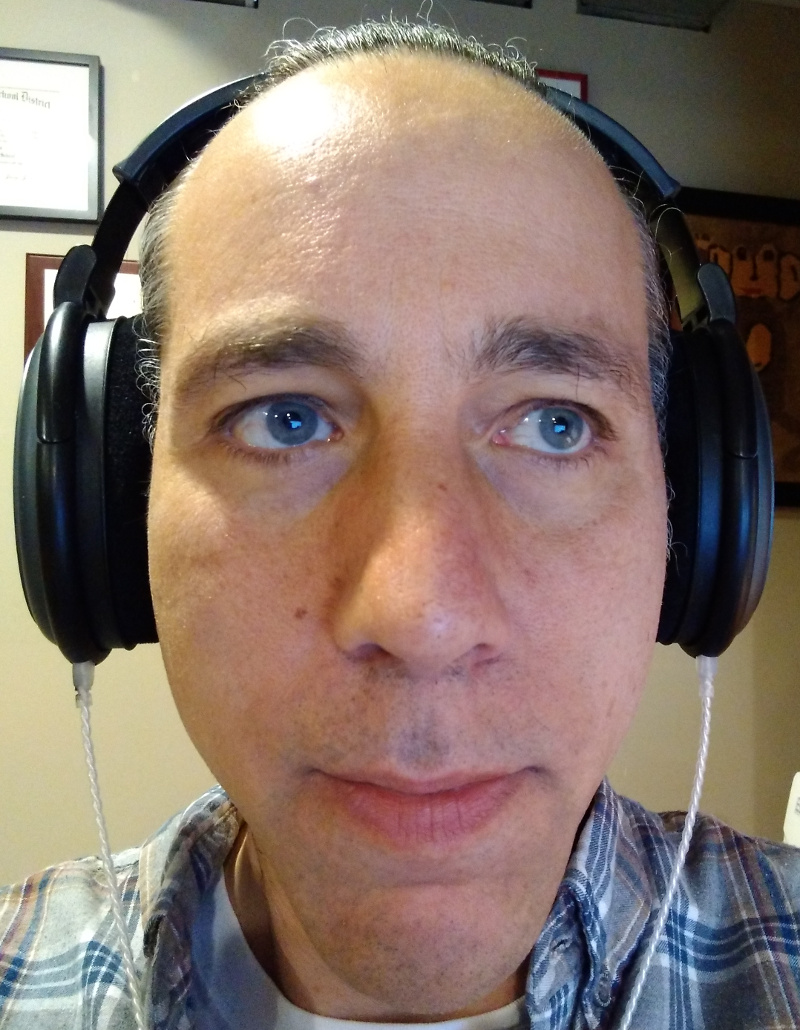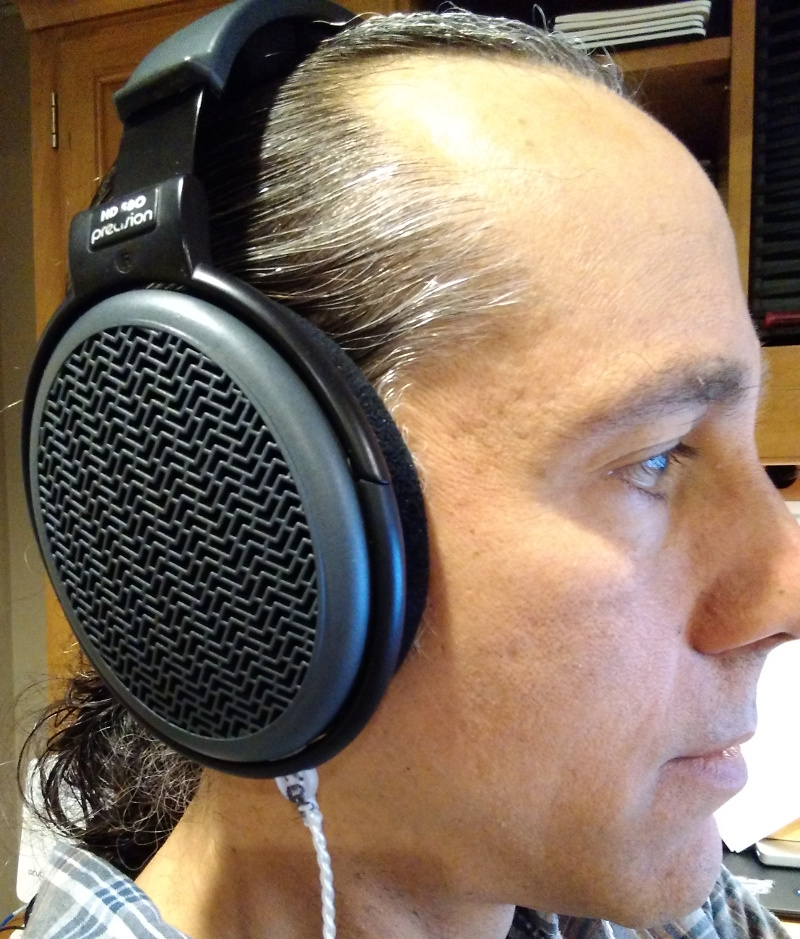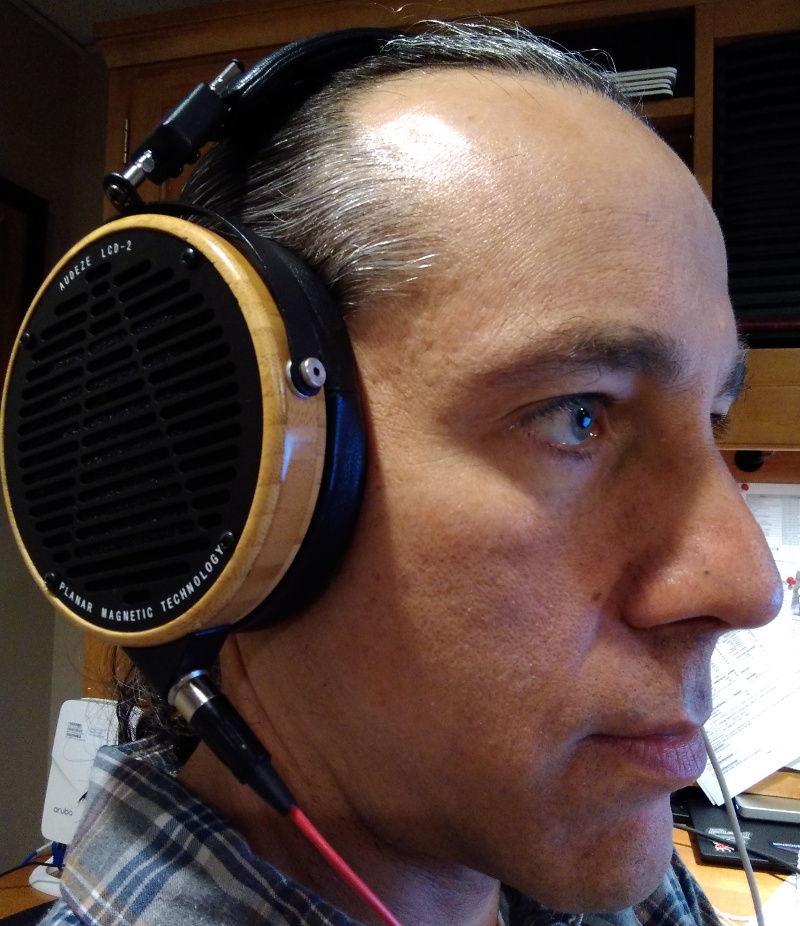I’ve been listening to headphones for decades. Over the years I’ve tried many different ones. The Sennheiser HD580 and Audeze LCD-2F are my favorites. I own a pair of each and use them daily. This is a direct comparison.
Sennheiser HD580
I bought my pair in 1999. Over the years I’ve replaced the pads and cable several times, and kept the drivers clean. They still work like new.

They aren’t made anymore, but three models currently made are almost the same:
- Sennheiser HD600
- Massdrop 58x
- Massdrop 6xx
Audeze LCD-2F (Fazor)
I bought mine in 2014 with the original Fazor drivers. Then in 2016 I sent it to Audeze to replace the drivers with the lastest/revised version.

Fit & Comfort
The HD580 are smaller, lighter, and better ventilated. They stay in place as I move my head around. I can wear them all day without any discomfort.
The LCD-2F are bigger, heavier, and less ventilated. They stay in place as long as my head is upright but if I bend my head forward & down, they try to fall off. They are comfortable, but after 2-3 hours the weight (especially on the headband) begins to drag.
In this category the HD580 wins.
Efficiency and Impedance
The HD580 are rated at 330 ohms, but their impedance ranges from 300 through most frequencies, rising to a peak of 600 ohms at 100 Hz. Voltage sensitivity is on the low side at 0.17 V for 90 dB SPL. A phone can’t drive them properly, you’ll need a headphone amp. And if that headphone amp (or phone) has a high output impedance, it will boost tones near the impedance peak (around 100 Hz) making the headphones sound warmer.
The LCD-2F are 70 ohms at all frequencies; being planar magnetic, their impedance vs. frequency curve is flat. Voltage sensitivity is a bit higher than the HD580 at 0.11 V for 90 dB SPL. They play 3-4 dB louder than the HD580 at the same volume setting (voltage). A phone can almost but not quite drive them properly, you’ll need a headphone amp. The frequency response of these headphones will not be affected by the amp’s (or phone’s) output impedance.
Overall, the LCD-2F are easier to drive than the HD580, and you may get acceptable results driving them from a phone, but you’ll need a headphone amp to get the most out of either.
Sound Quality
HD580
- Bass: rolled off below 100 Hz
- Midrange: smooth and linear
- Treble: rolled off above 10 kHz
- Distortion very low, but high (5%) in the bass
- Voicing: a slight brassy/boxy coloration
LCD-2F
- Bass: smooth and linear to subsonic
- Midrange: smooth and linear
- Treble: dip at 4 kHz
- Distortion very low throughout (even in the bass)
- Voicing: open, transparent uncolored
Summary
The LCD-2F has near-perfect ruler flat response from subsonic through the upper mids (to around 2 kHz). In the treble, it has the Audeze “house sound” with a dip around 4 kHz, though compared with the rest of the LCD models it has the smallest dip and is the most neutral. If you don’t EQ this dip, the sound is a bit soft — yet not dark, as the treble from 7 kHz on up is not attenuated.
The HD580 has a more linear, neutral response through the treble, though it rolls off both the lowest bass and the highest treble. The HD580 also needs EQ to lift the bass below 100 Hz, but when you do, the bass sounds wooly or soft as distortion becomes audible.
Overall, these are 2 of the best headphones money can buy in terms of sound quality. Of course you can spend a lot more, but you can’t really get much better sound. Without EQ, I prefer the HD580, yet with EQ, I prefer the LCD-2F.
That said, the differences are small enough that you need really good recordings and a quiet listening environment to hear it. And the HD580 is less expensive, more comfortable, and has less need of EQ. So it is the value king: 90% of the sound quality for 20% of the price.